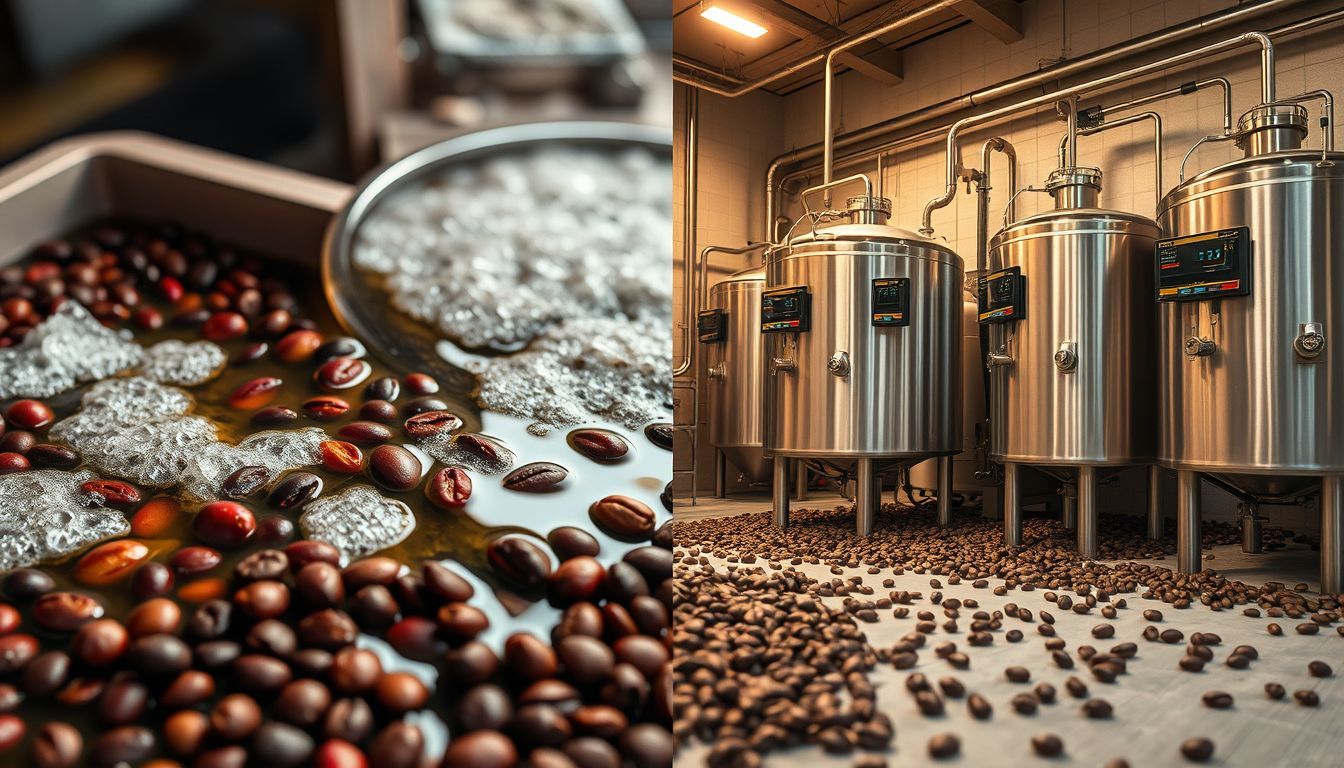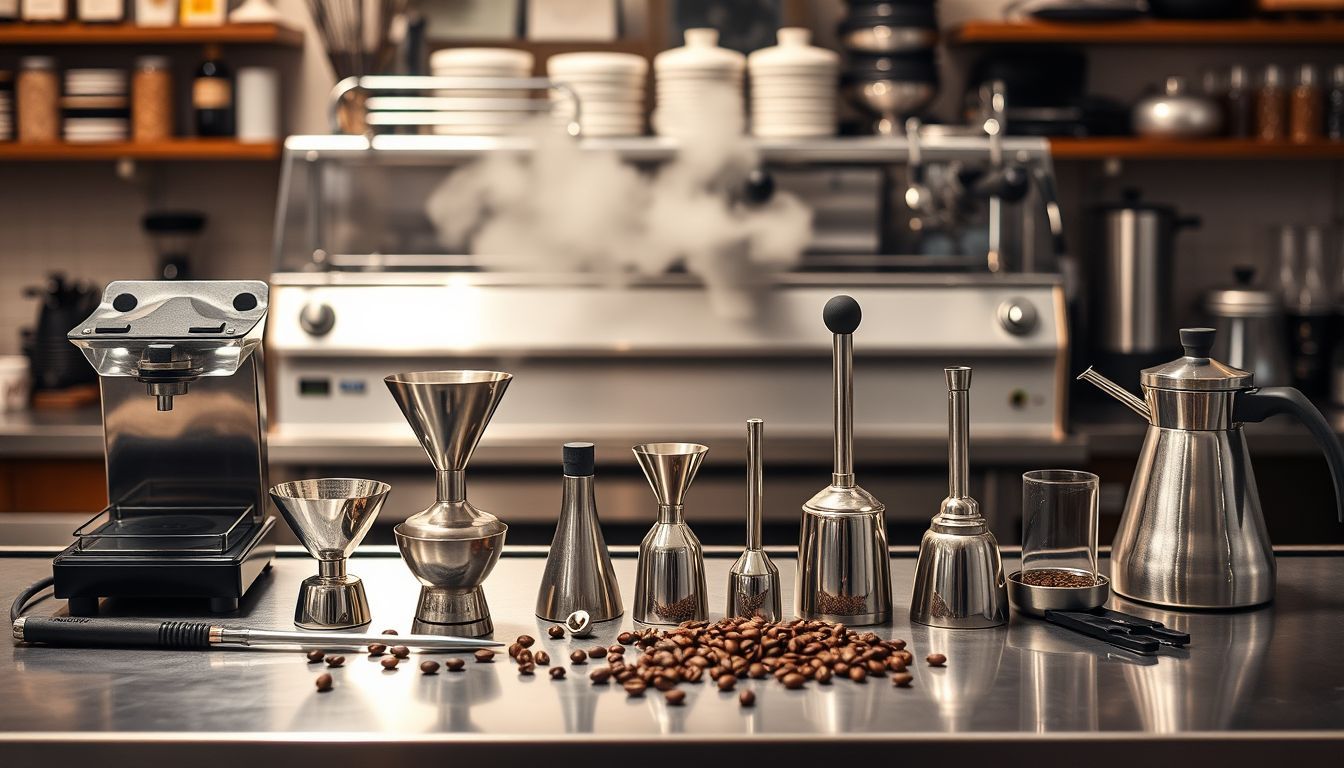How Coffee Fermentation Techniques Impact Global Flavor Profiles and Consumer Preferences
From Ethiopian honey processes to Colombian anaerobic fermentation, discover how post-harvest techniques are revolutionizing coffee flavors and reshaping what consumers crave in their cups.

Amazon Affiliate Disclosure
This post contains affiliate links. If you purchase through these links, we may earn a small commission at no additional cost to you.
How Coffee Fermentation Techniques Impact Global Flavor Profiles and Consumer Preferences
If you think coffee fermentation is just about leaving beans to sit around and get funky, you're not entirely wrong—but you're missing the beautiful complexity that makes this process the unsung hero of specialty coffee. As someone who's spent years analyzing market trends and tasting more coffee than my caffeine-addled heart probably should, I can tell you that fermentation is quietly revolutionizing how we think about flavor development and consumer preferences worldwide.
Fermentation isn't new—it's been happening naturally since coffee was first discovered. But the intentional manipulation of fermentation variables? That's where the magic happens, and it's reshaping the global coffee landscape in ways that would make even the most traditional roaster's head spin.
The Science Behind the Sorcery
Understanding Fermentation Fundamentals
Let's get nerdy for a moment (because honestly, that's where the fun is). Coffee fermentation occurs when microorganisms—primarily yeasts and bacteria—break down the mucilage surrounding the coffee bean. This process doesn't just remove the sticky stuff; it fundamentally alters the chemical composition of the bean, creating precursors to the flavors we eventually taste in our cups.
The traditional approach was simple: dump the beans in water, wait until the mucilage breaks down, wash, and dry. But modern producers have realized they're sitting on a flavor laboratory, and they're not afraid to experiment.
The Variables That Matter
Temperature, pH levels, oxygen exposure, duration, and microbial environment—these aren't just technical specifications; they're the ingredients in a recipe for flavor innovation. Change the temperature by a few degrees, extend fermentation by 12 hours, or introduce specific yeast strains, and you've potentially created an entirely new flavor profile.
What's fascinating from an analyst's perspective is how these variables correlate with consumer preference data. The market is showing clear trends toward more complex, wine-like coffees, and fermentation manipulation is the primary driver behind these profiles.
Global Fermentation Techniques: A World Tour
Central and South America: The Innovation Playground
Colombian producers have become the mad scientists of coffee fermentation, and I mean that in the most complimentary way possible. The country's diverse microclimates and progressive farming community have created a perfect storm for fermentation experimentation.
Anaerobic Fermentation has become Colombia's calling card. By removing oxygen from the equation, producers create an environment where different microorganisms thrive, producing esters and alcohols that translate to fruity, wine-like characteristics in the cup. These coffees are commanding premium prices—sometimes 3-4 times higher than traditionally processed beans—because consumers are willing to pay for complexity.
Carbonic Maceration, borrowed from winemaking, involves fermenting whole cherries in a CO2-rich environment. The result? Coffees with intense fruit-forward profiles that taste more like a tropical fruit salad than your grandfather's morning brew.
Africa: Tradition Meets Innovation
Ethiopian Natural Processing remains the gold standard for fruit-forward profiles, but even here, innovation is happening. Producers are experimenting with controlled drying environments and extended fermentation periods to enhance the already spectacular fruit characteristics that Ethiopian coffees are known for.
Kenyan Double Fermentation involves two separate fermentation cycles with a water wash in between. This technique produces the bright acidity and black currant notes that make Kenyan coffees instantly recognizable—and highly sought after by consumers who prefer brightness over body.
Asia-Pacific: The Experimental Frontier
Indonesian producers are pushing boundaries with Extended Wet Hulling processes, creating earthy, complex profiles that appeal to consumers seeking unique, terroir-driven experiences. Meanwhile, Australian producers are applying scientific rigor to fermentation control that would make a laboratory technician jealous.
Consumer Preferences: The Flavor Revolution
The Shift Toward Complexity
Here's where my analyst brain gets excited: consumer preference data shows a clear trend toward more complex, fruit-forward profiles. The specialty coffee market has grown by over 20% annually in recent years, and fermentation innovation is a significant driver of this growth.
Consumers, particularly millennials and Gen Z, are treating coffee like wine—they want origin stories, processing details, and unique flavor experiences. They're willing to pay premium prices for coffees that offer something different from the traditional "coffee" flavor profile.
Regional Preference Patterns
North American consumers show strong preferences for bright, acidic profiles—exactly what controlled fermentation techniques excel at producing. European markets lean toward complexity and uniqueness, driving demand for experimental processing methods. Asian markets, interestingly, show growing appreciation for both traditional and innovative profiles, creating opportunities for producers to showcase processing diversity.
The Instagram Effect
Let's be honest: fermentation techniques create coffees that are inherently "shareable." When your morning brew tastes like blueberry pie or tropical fruit punch, you're going to post about it. This social media amplification is creating viral moments for specific processing methods and driving consumer curiosity about fermentation techniques.
Economic Impact: Following the Money
Premium Pricing for Processing Innovation
From a market analysis perspective, the numbers don't lie: innovative fermentation techniques command premium prices. Anaerobic fermentation can add $2-5 per pound to green coffee prices, and these premiums often translate to retail prices that are 50-100% higher than traditionally processed coffees.
Producer Investment and Risk
But here's the catch: fermentation innovation requires investment in infrastructure, training, and quality control. Producers need fermentation tanks, pH meters, temperature control systems, and the knowledge to use them effectively. The risk is real—a failed fermentation batch can destroy an entire harvest.
Market Sustainability
The question I'm constantly asked is whether this trend is sustainable. My analysis suggests yes, but with caveats. Consumer education is crucial—people need to understand why they're paying more. Additionally, the market needs continued innovation to maintain interest; what's exotic today becomes commonplace tomorrow.
The Future of Fermentation
Technology Integration
We're seeing increased integration of technology in fermentation control. IoT sensors, automated pH monitoring, and data logging are becoming standard tools for progressive producers. This technological adoption is creating more consistent results and enabling producers to replicate successful fermentation profiles.
Yeast Inoculation
The next frontier is controlled yeast inoculation—introducing specific yeast strains to create targeted flavor profiles. This technique, common in brewing and winemaking, is just beginning to gain traction in coffee, but early results are promising.
Sustainability Considerations
As the industry evolves, sustainability remains crucial. Water usage, energy consumption, and waste management in fermentation processes are becoming important considerations for environmentally conscious consumers and producers alike.
Conclusion: Fermentation as Coffee's Flavor Frontier
Coffee fermentation has evolved from a necessary processing step to a sophisticated tool for flavor development and market differentiation. The techniques emerging from farms worldwide aren't just creating new flavors—they're reshaping consumer expectations and creating new economic opportunities for producers.
As an industry analyst, I'm excited about the innovation happening in fermentation, but I'm equally focused on ensuring this innovation translates to sustainable value for everyone in the supply chain. The consumers win with more diverse flavor experiences, producers win with premium pricing opportunities, and the industry wins with increased engagement and market growth.
The fermentation revolution is just beginning, and if current trends continue, we're looking at a future where the question isn't just "where is your coffee from?" but "how was it fermented?" And honestly, that's a future I'm excited to taste.
What fermentation techniques have you tried in your coffee journey? The complexity and innovation happening in this space never cease to amaze me, and I'd love to hear about your experiences with these flavor-forward processing methods.

Sofia Rossi
I started my career in a world of spreadsheets and boardrooms, but I quickly realized the most interesting data was in the way people interacted when the pressure was on. My novels are my way of analyzing the human heart—the messy, complicated, and often hilarious parts. I write about the lives we lead now, with all the love, ambition, and absurdity that comes with it.


